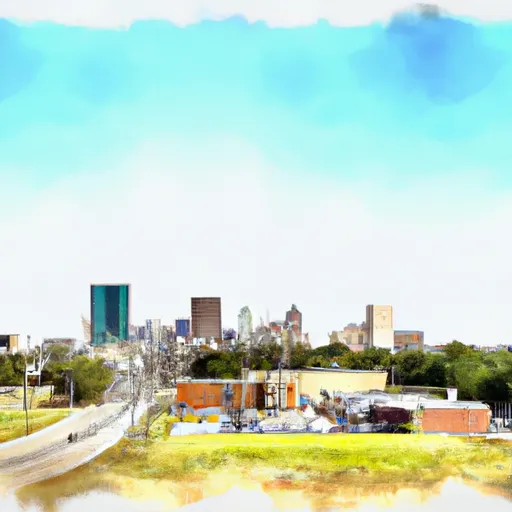-
 Snoflo Premium
Snoflo Premium
Get unlimited access to all our content
With no Ad interruptions! - Start Your Free Trial Login with existing account
Prairie-Hill
Eden Index
Climate
8.3
•
Recreation
2.3
•
Community
•
Safeguard
4.1/10

Prairie-Hill, Texas is a small rural community located in Limestone County. The region experiences a humid subtropical climate characterized by hot and humid summers and mild winters. Average high temperatures in summer range from 90°F to 95°F (32°C to 35°C), while winters see average highs around 60°F (15°C). Precipitation is evenly distributed throughout the year, with an average annual rainfall of 40 inches (1,000 mm).
Hydrologically, Prairie-Hill benefits from the nearby Navasota River, which provides a water source for the region. The river also offers recreational opportunities such as fishing, boating, and kayaking. Additionally, the area is home to several ponds and lakes that attract anglers and nature enthusiasts.
Outdoor recreation opportunities in Prairie-Hill extend beyond water activities. The countryside is ideal for hiking, camping, and birdwatching, with numerous trails and wildlife-rich areas to explore. The rolling prairies and scenic landscapes provide a serene environment for nature lovers.
In summary, Prairie-Hill, Texas offers a humid subtropical climate, a reliable water source in the Navasota River, and a range of outdoor recreation opportunities including fishing, boating, hiking, camping, and birdwatching.
What is the Eden Index?
The Snoflo Eden Index serves as a comprehensive rating system for regions, evaluating their desirability through a holistic assessment of climate health, outdoor recreation opportunities, and natural disaster risk, acknowledging the profound impact of these factors on livability and well-being.
Climate Health Indicator (CHI): 8.3
Prairie-Hill receives approximately
965mm of rain per year,
with humidity levels near 84%
and air temperatures averaging around
19°C.
Prairie-Hill has a plant hardyness factor of
8, meaning
plants and agriculture in this region tend to thrive here all year round.
By considering the ideal temperature range, reliable water supplies, clean air, and stable seasonal rain or snowpacks, the Climate Health Indicator (CHI) underscores the significance of a healthy climate as the foundation for quality living.
A healthy climate is paramount for ensuring a high quality of life and livability in a region, fostering both physical well-being and environmental harmony. This can be characterized by ideal temperatures, reliable access to water supplies, clean air, and consistent seasonal rain or snowpacks.
Weather Forecast
Streamflow Conditions
Lower Brazos
Area Rivers
Lower Brazos
Snowpack Depths
Lower Brazos
Reservoir Storage Capacity
Lower Brazos
Groundwater Levels
Recreational Opportunity Index (ROI): 2.3
The Recreational Opportunity Index (ROI) recognizes the value of outdoor recreational options, such as parks, hiking trails, camping sites, and fishing spots, while acknowledging that climate plays a pivotal role in ensuring the comfort and consistency of these experiences.
Access to outdoor recreational opportunities, encompassing activities such as parks, hiking, camping, and fishing, is crucial for overall well-being, and the climate plays a pivotal role in enabling and enhancing these experiences, ensuring that individuals can engage in nature-based activities comfortably and consistently.
Camping Areas
| Campground | Campsites | Reservations | Toilets | Showers | Elevation |
|---|---|---|---|---|---|
| Oak Park - Navarro Mills Reservoir | 50 | 465 ft | |||
| Town Square - Fayetteville | None | 409 ft | |||
| Oak Thicket Park - Fayette Lake | 20 | 405 ft | |||
| Falls on the Brazos Park | 15 | 335 ft | |||
| Park Prarie - Lake Fayette | 12 | 406 ft | |||
| Rocky Creek - Lake Somerville | 200 | 284 ft | |||
| Nails Creek - Lake Somerville State Park | 60 | 276 ft | |||
| Lake Mexia Rec Area | 22 | 471 ft | |||
| Liberty Hill - Navarro Mills Reservoir | 110 | 467 ft | |||
| Birch Creek - Lake Somerville State Park | 125 | 266 ft |
Nearby Ski Areas
Catastrophe Safeguard Index (CSI):
The Catastrophe Safeguard Index (CSI) recognizes that natural disaster risk, encompassing floods, fires, hurricanes, and tornadoes, can drastically affect safety and the overall appeal of an area.
The level of natural disaster risk in a region significantly affects safety and the overall livability, with climate change amplifying these risks by potentially increasing the frequency and intensity of events like floods, fires, hurricanes, and tornadoes, thereby posing substantial challenges to community resilience and well-being.
Community Resilience Indicator (CRI):
The Community Resilience Indicator (CRI) recognizes that education, healthcare, and socioeconomics are crucial to the well-being of a region. The CRI acknowledges the profound impact of these elements on residents' overall quality of life. By evaluating educational resources, healthcare accessibility, and economic inclusivity, the index captures the essential aspects that contribute to a thriving community, fostering resident satisfaction, equity, and social cohesion.

